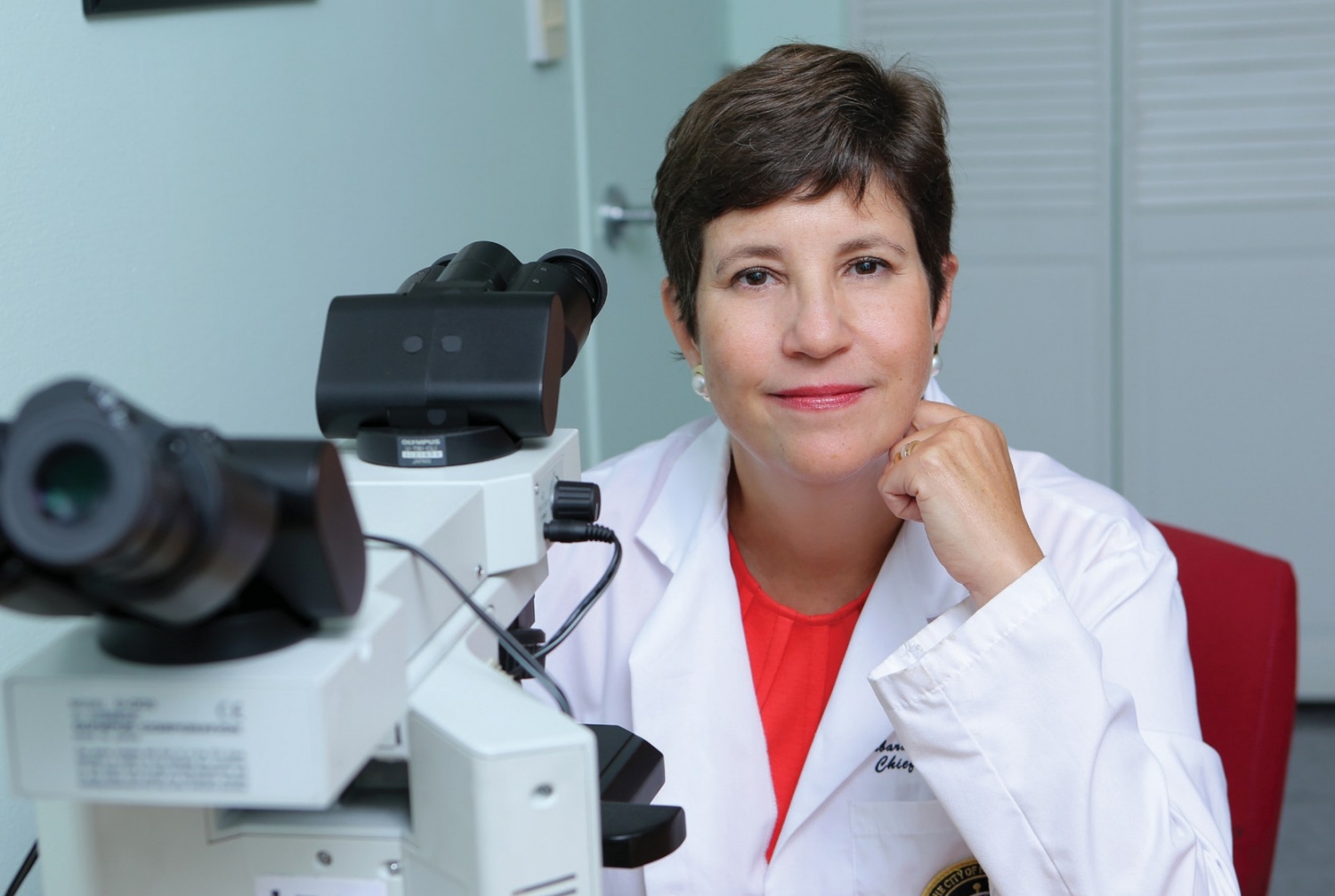Raised in a family of physicians, Dr. Barbara Sampson, MD ’94, always knew she wanted to go into medicine. She was just 10 when, one night at the dinner table, her internist father set her on her ultimate career path by noting his admiration for pathologists, whom he called “doctors’ doctors.”
Today, Dr. Sampson is one the most prominent forensic pathologists in America: Since 2014 she has been chief medical examiner M.E. of New York City. The first woman to hold the position, she oversees a massive operation with a $75 million annual budget and more than 600 employees who conduct 5,500 autopsies a year and run mortuaries in Manhattan, Brooklyn and Queens.
Dr. Sampson, who first joined the M.E.’s office as a fellow in 1998, describes her job as “using science and medicine to serve justice.” “We’re not part of the prosecution or the defense; we’re straight down the middle,” she says. “We get scientific results, and the criminal justice system can use those highly accurate results as they will.” She stresses that although the M.E’s post is politically appointed, her office is fiercely independent. City officials, she says, “know we are an office of science and medicine and we are immune from any undue political pressure. The truth is the truth, and the science speaks for itself.” When Dr. Sampson took over as M.E., she had a tough act to follow. Her predecessor, the renowned Dr. Charles Hirsch had turned around a floundering office and made New York the first major city to eliminate its backlog of rape kits, a standard Dr. Sampson has maintained. When Hirsch retired in 2013, Dr. Sampson became acting chief and earned the official nod the following year. Before his retirement, the two had enjoyed a long and close relationship as friends and colleagues. “His wisdom continues to guide me each and every day,” she says.
In addition to conducting autopsies, Dr. Sampson’s office runs what she calls the country’s most advanced public DNA lab; it processes evidence not just in homicides, but in all cases where testing may help, including sexual assaults and property crimes. “The number one thing is serving the families of New York City at a terrible time in their lives, giving them some closure, answering their final questions,” she says. “What is the cause of death? How did it happen? Did they suffer? That’s the most important part of my job.” Her office is also involved in disaster preparedness for events that could involve mass fatalities, ranging from terror attacks to bus crashes to an Ebola outbreak.
Fifteen years after the largest mass casualty event in New York’s modern history — the 9/11 attacks — the M.E.’s office is still working to provide closure to victims’ families. As Dr. Sampson points out, only 60 percent of the people who perished at the World Trade Center site have been positively identified. “Forty percent of families still have no scientific confirmation that their loved one died that day,” she says. “So we go back to these remains as DNA technology improves, and the families are incredibly grateful. We will continue to do that as long as it takes.”
—Keri Blakinger
This story first appeared in Weill Cornell Medicine, Vol. 16. No. 2

